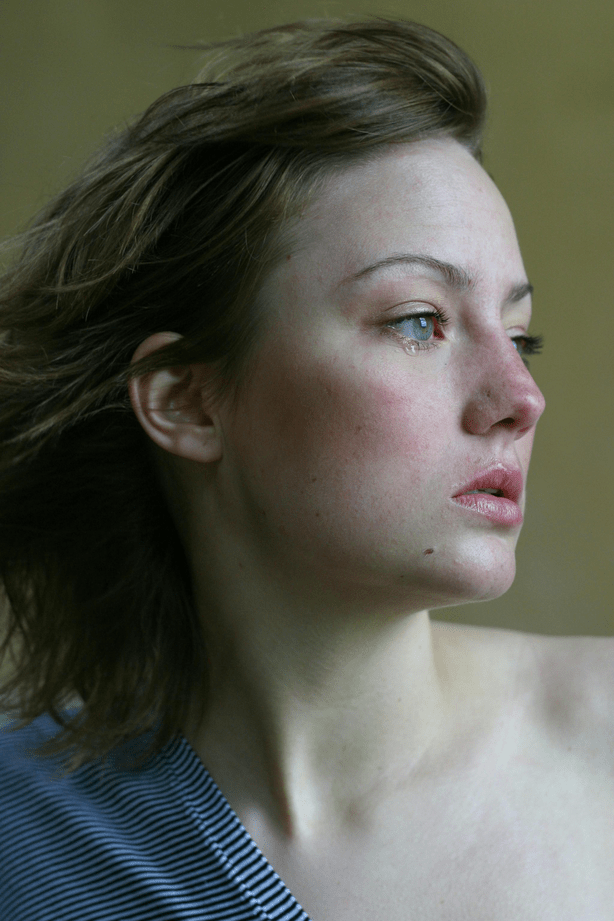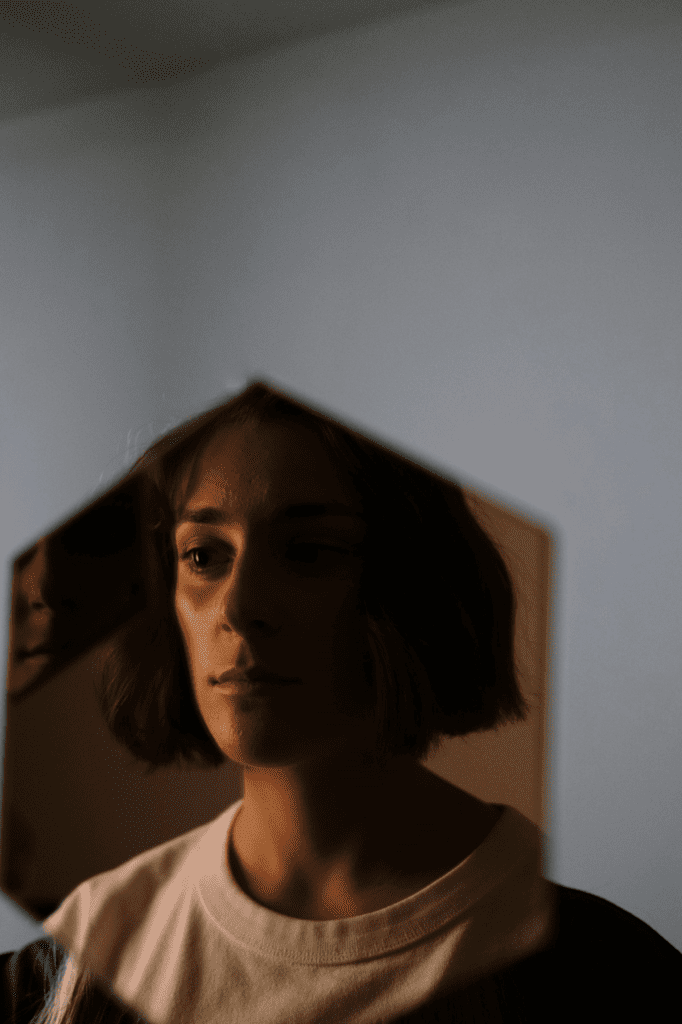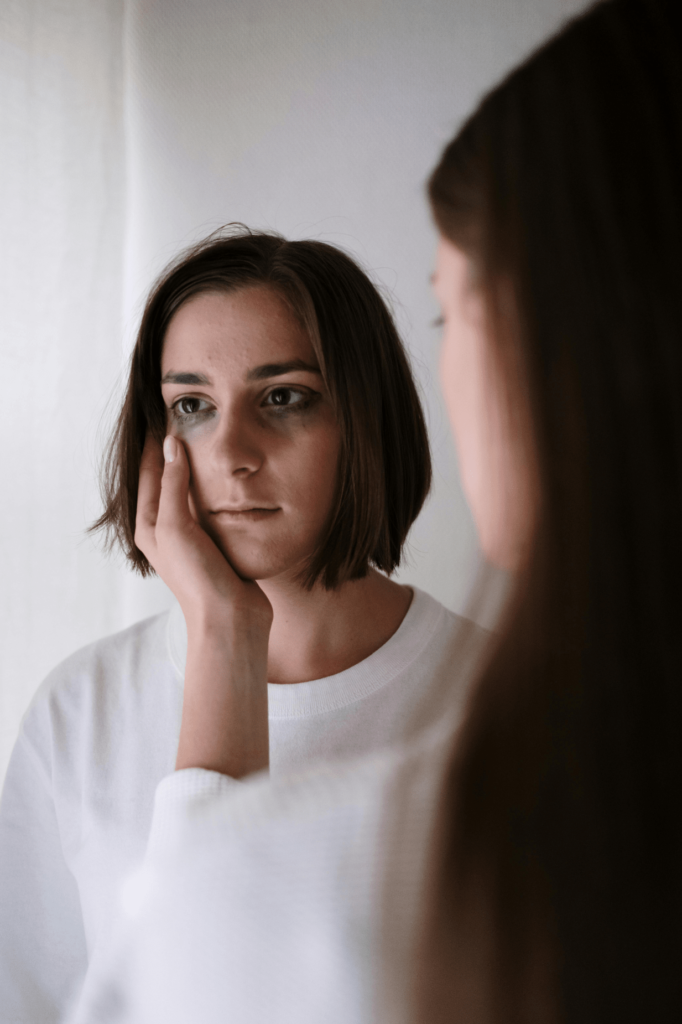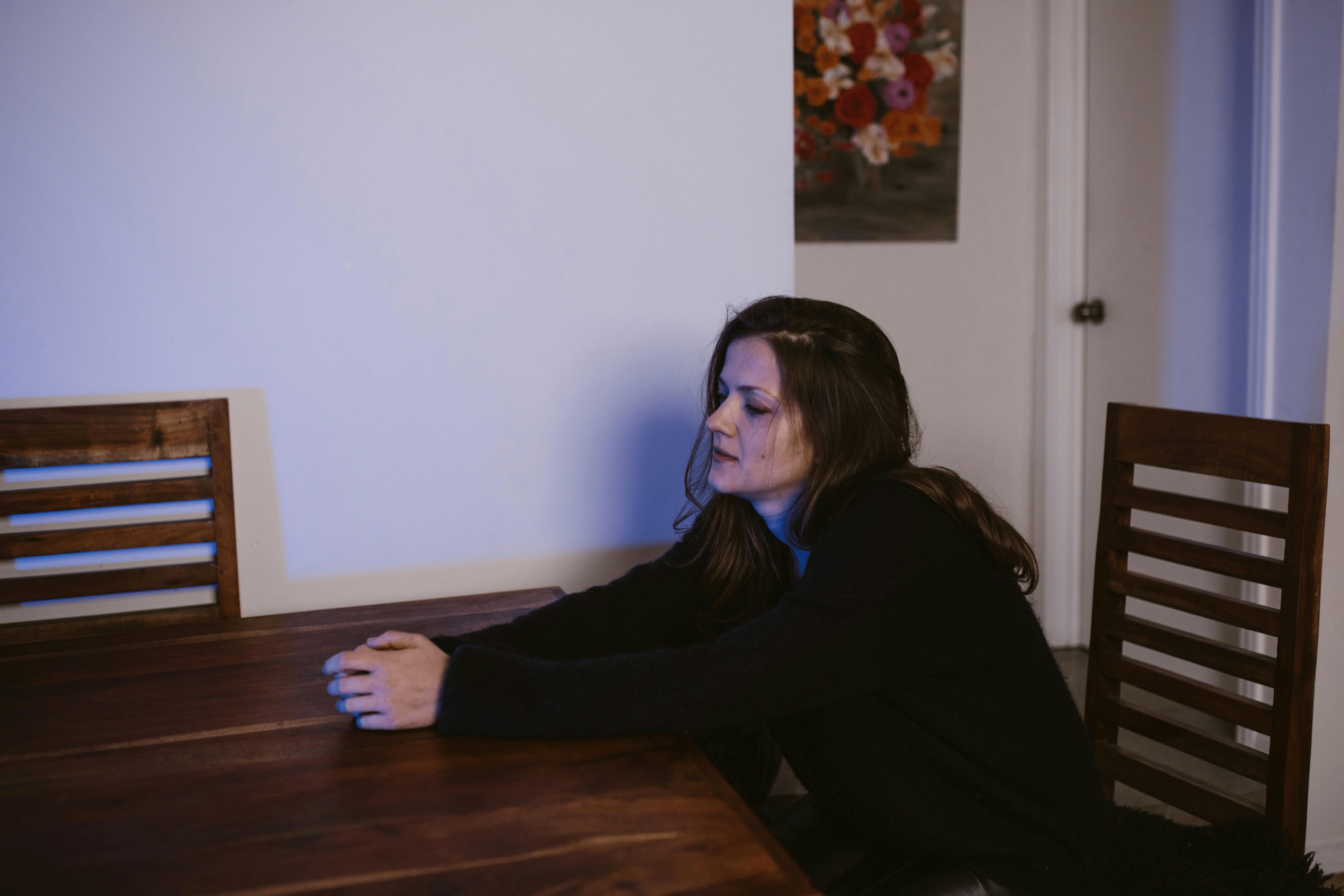Last updated on December 18th, 2024 at 03:15 am
- 1. Understanding Anxiety Disorders
- 2. Types of Anxiety Disorders
- 2.1 Generalized Anxiety Disorder (GAD)
- 2.2 Panic Disorder
- 2.3 Social Anxiety Disorder
- 2.4 Specific Phobias
- 2.5 Agoraphobia
- 2.6 Separation Anxiety Disorder
- 3. Causes of Anxiety Disorders
- 3.1 Genetic Factors
- 3.2 Brain Chemistry
- 3.3 Environmental Factors
- 3.4 Personality Traits
- 3.5 Medical Conditions
- 4. Symptoms of Anxiety Disorders
- 4.1 Physical Symptoms
- 4.2 Emotional Symptoms
- 4.3 Behavioral Symptoms
- 5. Diagnosis of Anxiety Disorders
- 5.1 Clinical Interview
- 5.2 Physical Examination
- 5.3 Psychological Assessments
- 5.4 Diagnostic Criteria
- 6. Treatment Options for Anxiety Disorders
- 6.1 Psychotherapy
- 6.2 Medication
- 6.3 Lifestyle Changes
- 6.4 Support Groups
- 7. Anxiety Disorders Across the Lifespan
- 7.1 Childhood Anxiety
- 7.2 Adolescent Anxiety
- 7.3 Adult Anxiety
- 7.4 Anxiety in Older Adults
- 8. Coping Strategies for Managing Anxiety
- 8.1 Relaxation Techniques
- 8.2 Time Management
- 8.3 Journaling
- 8.4 Healthy Boundaries
- 8.5 Positive Self-Talk
- 9. The Impact of Anxiety Disorders on Daily Life
- 9.1 Relationships
- 9.2 Work Performance
- 9.3 Physical Health
- 9.4 Quality of Life
- 10. Future Directions in Anxiety Research and Treatment
- 10.1 Personalized Medicine
- 10.2 Digital Interventions
- 10.3 Novel Therapies
- 10.4 Prevention Strategies
- Anxiety Disorder Prevention Strategies
- Anxiety Disorder in Children
- Cognitive Behavioral Therapy for Anxiety
- Anxiety Disorder Genetic Factors
- Anxiety Disorder Neurobiology
- Anxiety Disorder Neurotransmitters and Hormonal Influences
- Anxiety in Adolescents Ages
- Anxiety Disorder Lifestyle Modifications
- Anxiety Disorder Exposure Therapy
- Anxiety Disorder Family Therapy
- Anxiety Disorder Online Therapy and Teletherapy Options
- Anxiety Disorder Mobile Apps and Virtual Reality Therapy
- Anxiety Disorder Comorbidities
- Anxiety Disorder Physical Conditions and Physical Exams
- Anxiety Disorder Diagnostic Tests
- Anxiety Disorder Hormonal and Neurochemical Influences
- Anxiety Disorder Medications for Anxiety
- Anxiety Disorder and Chronic Pain
- Obsessive-Compulsive Disorder Therapy
- Acute Stress Disorder and Traumatic Events
- Social Anxiety Disorder Diagnosis
- Anxiety Attack and Panic Disorder Symptoms
- Generalized Anxiety Disorder Causes
- Anxiety Disorder and Acceptance and Commitment Therapy
- Anxiety Disorder and Physical Illness
- Anxiety Disorder Group Therapy and Support Groups
- Anxiety Disorder and Herbal Remedies
- Anxiety Disorder Biofeedback and Neurofeedback
- Conclusion
- Frequently Asked Questions
- What Are The Common Types Of Anxiety Disorders And How Are They Differentiated?
- What Causes Generalized Anxiety Disorder And How Is It Diagnosed?
- How Effective Is Cognitive-Behavioral Therapy For Social Anxiety Disorder?
- What Are The Most Common Symptoms Of Panic Disorder And How Are They Managed?
- Can Social Anxiety Disorder Lead To Other Mental Health Issues?
- How Is Exposure Therapy Used In Treating Specific Phobias?
- What Are The Risk Factors For Developing An Anxiety Disorder?
- How Do Anti-Anxiety Medications Work, And What Are The Potential Side Effects?
- What Role Does A Health Care Provider Play In Diagnosing Anxiety Disorders?
- How Can Stress Management Techniques Help People With Generalized Anxiety Disorder?
- What Is The Relationship Between Anxiety Disorders And Heart Attack Risk?
- Are There Any Herbal Remedies Proven To Help With Anxiety Symptoms?
- What Is The Diagnostic Criteria For Generalized Anxiety Disorder?
- Can Cognitive Behavioral Therapy Be Used For Treating Obsessive-Compulsive Disorder?
- How Does Acceptance And Commitment Therapy Differ From Cognitive-Behavioral Therapy?
- What Are The Symptoms Of Post-Traumatic Stress Disorder And How Is It Treated?
- What Role Do Genetic Factors Play In The Development Of Anxiety Disorders?
- How Do Healthcare Providers Use Diagnostic Tests To Rule Out Physical Causes Of Anxiety?
- What Are The Physical Symptoms Commonly Associated With Severe Anxiety?
- Can Anxiety Disorders Be Managed With Lifestyle Modifications Alone?
Anxiety is a normal human emotion that everyone experiences from time to time. However, for millions of people, anxiety becomes excessive, persistent, and debilitating, developing into an anxiety disorder that significantly impacts their daily life.
This comprehensive guide explores the various types of anxiety disorders, their causes, symptoms, and treatment options.
1. Understanding Anxiety Disorders
Anxiety disorders are characterized by intense, excessive, and persistent worry and fear about everyday situations. These feelings can be overwhelming and interfere with daily activities. Unlike normal feelings of nervousness or stress, anxiety disorders involve irrational fears that are out of proportion to any actual threat.
Some key features of anxiety disorders include:
- Persistent and intense worry or fear
- Physical symptoms like rapid heartbeat, sweating, and trembling
- Avoidance behaviors
- Difficulty controlling anxious thoughts
- Significant impairment in daily functioning
2. Types of Anxiety Disorders
There are several distinct types of anxiety disorders, each with its own unique set of symptoms and triggers:
2.1 Generalized Anxiety Disorder (GAD)
GAD involves persistent and excessive worry about various aspects of life, such as work, school, health, finances, or relationships. People with GAD often expect the worst outcome in situations and struggle to control their anxiety.
2.2 Panic Disorder
Panic disorder is characterized by recurrent, unexpected panic attacks – sudden episodes of intense fear accompanied by physical symptoms like chest pain, heart palpitations, shortness of breath, and dizziness.
2.3 Social Anxiety Disorder
Also known as social phobia, this disorder involves intense fear of social situations and being judged or scrutinized by others. People with social anxiety may avoid social interactions or endure them with extreme discomfort.
2.4 Specific Phobias
Specific phobias are intense, irrational fears of particular objects or situations, such as heights, flying, spiders, or needles. The fear is disproportionate to the actual danger posed.
2.5 Agoraphobia
Agoraphobia involves fear of places or situations where escape might be difficult or help may not be available if panic symptoms occur. This can lead to avoidance of public spaces, crowds, or traveling alone.
2.6 Separation Anxiety Disorder
While often associated with children, separation anxiety can affect adults too. It involves excessive fear of being separated from attachment figures, such as parents or partners.


3. Causes of Anxiety Disorders
The exact causes of anxiety disorders are not fully understood, but research suggests a combination of factors contribute to their development:
3.1 Genetic Factors
Studies have shown that anxiety disorders can run in families, suggesting a genetic component. However, having a family history doesn’t guarantee developing an anxiety disorder.
3.2 Brain Chemistry
Imbalances in neurotransmitters, particularly serotonin and norepinephrine, may play a role in anxiety disorders. These chemical messengers help regulate mood and stress responses.
3.3 Environmental Factors
Traumatic experiences, chronic stress, or significant life changes can trigger the onset of anxiety disorders in susceptible individuals.
3.4 Personality Traits
Certain personality types, such as those who are perfectionistic or have low self-esteem, may be more prone to developing anxiety disorders.
3.5 Medical Conditions
Some medical conditions, including thyroid problems, heart disease, and respiratory disorders, can mimic or exacerbate anxiety symptoms.
4. Symptoms of Anxiety Disorders
Anxiety disorders can manifest with a wide range of physical, emotional, and behavioral symptoms:
4.1 Physical Symptoms
- Rapid heartbeat
- Sweating
- Trembling or shaking
- Shortness of breath
- Chest pain or tightness
- Nausea or stomach upset
- Dizziness or lightheadedness
- Muscle tension
- Fatigue
- Sleep disturbances
4.2 Emotional Symptoms
- Excessive worry or fear
- Feeling of impending doom
- Restlessness or feeling on edge
- Irritability
- Difficulty concentrating
- Mind going blank
- Heightened startle response
4.3 Behavioral Symptoms
- Avoidance of anxiety-provoking situations
- Seeking reassurance
- Procrastination
- Difficulty making decisions
- Perfectionism
- Compulsive behaviors


5. Diagnosis of Anxiety Disorders
Diagnosing anxiety disorders involves a comprehensive evaluation by a mental health professional. The process typically includes:
5.1 Clinical Interview
A detailed discussion of symptoms, medical history, and life circumstances helps identify patterns and potential triggers of anxiety.
5.2 Physical Examination
A medical check-up may be necessary to rule out underlying health conditions that could be causing or contributing to anxiety symptoms.
5.3 Psychological Assessments
Standardized questionnaires and rating scales can help quantify anxiety symptoms and differentiate between different types of anxiety disorders.
5.4 Diagnostic Criteria
Mental health professionals use criteria outlined in the Diagnostic and Statistical Manual of Mental Disorders (DSM-5) to make a formal diagnosis.
6. Treatment Options for Anxiety Disorders
Effective treatment for anxiety disorders often involves a combination of approaches:
6.1 Psychotherapy
Cognitive-behavioral therapy (CBT) is the most widely used and effective form of therapy for anxiety disorders. It helps individuals identify and change negative thought patterns and behaviors that contribute to anxiety.
6.2 Medication
Several types of medications can be prescribed to manage anxiety symptoms:
- Selective serotonin reuptake inhibitors (SSRIs)
- Serotonin-norepinephrine reuptake inhibitors (SNRIs)
- Benzodiazepines (for short-term use)
- Buspirone
- Beta-blockers
6.3 Lifestyle Changes
Certain lifestyle modifications can help manage anxiety:
- Regular exercise
- Stress reduction techniques (e.g., mindfulness, meditation)
- Healthy sleep habits
- Balanced diet
- Limiting caffeine and alcohol intake
6.4 Support Groups
Joining a support group can provide valuable emotional support and coping strategies from others who understand the challenges of living with anxiety disorders.


7. Anxiety Disorders Across the Lifespan
Anxiety disorders can affect individuals at any age, but their presentation and impact may vary:
7.1 Childhood Anxiety
Children with anxiety may exhibit symptoms like excessive clinginess, school refusal, or frequent stomachaches. Early intervention is crucial for preventing long-term difficulties.
7.2 Adolescent Anxiety
Teens may experience social anxiety, performance anxiety, or generalized worry about their future. This can impact academic performance and social relationships.
7.3 Adult Anxiety
In adulthood, anxiety disorders can interfere with work, relationships, and overall quality of life. Co-occurring conditions like depression are common.
7.4 Anxiety in Older Adults
Older adults may experience anxiety related to health concerns, loss of independence, or social isolation. Recognizing and treating anxiety in this population is essential for maintaining well-being.
8. Coping Strategies for Managing Anxiety
In addition to professional treatment, individuals can employ various self-help strategies to manage anxiety:
8.1 Relaxation Techniques
- Deep breathing exercises
- Progressive muscle relaxation
- Guided imagery
- Yoga
8.2 Time Management
Prioritizing tasks and breaking them into manageable steps can help reduce overwhelming feelings.
8.3 Journaling
Writing down thoughts and feelings can help identify anxiety triggers and patterns.
8.4 Healthy Boundaries
Learning to say no and setting limits on commitments can prevent overextension and reduce stress.
8.5 Positive Self-Talk
Challenging negative thoughts and replacing them with more balanced, realistic ones can improve mood and reduce anxiety.


9. The Impact of Anxiety Disorders on Daily Life
Anxiety disorders can have far-reaching effects on various aspects of life:
9.1 Relationships
Anxiety can strain personal relationships, leading to misunderstandings, conflicts, or social withdrawal.
9.2 Work Performance
Difficulties with concentration, decision-making, and meeting deadlines can impact job performance and career advancement.
9.3 Physical Health
Chronic anxiety can contribute to various health problems, including cardiovascular issues, digestive disorders, and weakened immune function.
9.4 Quality of Life
Anxiety disorders can significantly reduce overall life satisfaction and limit participation in enjoyable activities.


10. Future Directions in Anxiety Research and Treatment
The field of anxiety research continues to evolve, with promising developments on the horizon:
10.1 Personalized Medicine
Advances in genetics and neuroscience may lead to more targeted, individualized treatments for anxiety disorders.
10.2 Digital Interventions
Smartphone apps and online therapy platforms are expanding access to anxiety management tools and support.
10.3 Novel Therapies
Emerging treatments like transcranial magnetic stimulation (TMS) and ketamine therapy show potential for treatment-resistant anxiety.
10.4 Prevention Strategies
Increased focus on early identification and intervention may help prevent the development of full-blown anxiety disorders.
Anxiety Disorder Prevention Strategies
Prevention strategies for anxiety disorders focus on mitigating potential risk factors and promoting resilience. Encouraging stress management techniques, such as mindfulness practices and regular aerobic exercise, has proven effective in reducing feelings of anxiety over time.
Educating communities about anxiety disorder risk factors can aid in early identification and intervention. Empowering individuals with coping skills helps reduce anxiety onset and severity.
Anxiety Disorder in Children
Anxiety disorder in children often manifests through physical complaints, avoidance behaviors, or intense fears. The National Institute of Mental Health highlights that stressful life events, such as family changes or school-related stress, may trigger or exacerbate anxiety symptoms in children.
Early intervention is crucial to prevent the condition from impacting everyday activities and to foster healthy coping mechanisms. Consistent support from parents and educators can significantly improve outcomes.
Cognitive Behavioral Therapy for Anxiety
Cognitive-behavioral therapy (CBT) is considered the first-line treatment for many types of anxiety disorders, including generalized anxiety disorder and social anxiety disorder. CBT aims to help people with anxiety disorders recognize and alter negative thought patterns, often through exercises like exposure therapy to reduce persistent fear and extreme fear.
By gradually facing feared situations in a controlled way, CBT helps make anxious feelings of fear more manageable. This approach promotes long-term coping skills and builds resilience (American Psychiatric Association).


Anxiety Disorder Genetic Factors
Genetics play a significant role in the likelihood of developing anxiety disorders. Studies have shown that blood relatives of individuals with anxiety disorder are more prone to similar mental health conditions, suggesting a hereditary component.
Genetic factors combined with environmental triggers, such as a traumatic event or stressful events, contribute to the onset of anxiety disorder. Understanding genetic predispositions can help target preventive strategies (National Institutes of Health).
Anxiety Disorder Neurobiology
Anxiety disorder neurobiology encompasses the study of brain structures and chemicals involved in anxiety responses. Imbalances in neurotransmitters like serotonin and norepinephrine have been linked to persistent feelings of anxiety.
Advanced anxiety disorder brain imaging techniques have revealed that the amygdala, a key region responsible for processing emotions, is hyperactive in people with severe anxiety. These findings contribute to new therapeutic approaches (National Institute of Mental Health).
Anxiety Disorder Neurotransmitters and Hormonal Influences
Neurotransmitters and hormonal imbalances have been implicated in the development and persistence of anxiety disorders. Hormones such as cortisol, which is released in response to stress, can increase heart rate and contribute to anxiety symptoms worse.
Anxiety disorder hormonal influences involve shifts in hormone levels during significant life events, potentially intensifying anxiety symptoms. Understanding these influences can improve targeted treatments.
Anxiety in Adolescents Ages
Adolescents ages 13 to 18 are particularly susceptible to developing anxiety disorders. Factors like academic pressure, social dynamics, and significant life transitions contribute to rising anxiety levels among teenagers.
Social anxiety, specifically, is a common type of anxiety disorder in this age group, manifesting through an intense fear of public speaking or being scrutinized by peers. Early intervention, such as psychotherapy for anxiety disorders, is crucial for ensuring anxiety in adolescents does not persist into adulthood.


Anxiety Disorder Lifestyle Modifications
Effective lifestyle modifications can greatly improve the quality of life for those with anxiety disorders. Engaging in aerobic exercise, practicing grounding techniques, and avoiding substance abuse are strategies that healthcare professionals recommend.
Additionally, limiting caffeine and alcohol intake can prevent anxiety worse. Mindfulness techniques for anxiety help in cultivating present-moment awareness, thus reducing constant worries about future events (Bezzy Depression).
Anxiety Disorder Exposure Therapy
Exposure therapy is a pivotal type of psychotherapy used to treat anxiety disorders, especially for those dealing with social anxiety disorder, specific phobias management, and Obsessive-compulsive disorder therapy. This method involves repeated exposure to anxiety-provoking situations, helping people with panic disorder confront fears in a structured manner.
By reducing excessive anxiety, exposure therapy allows individuals to gain control over their anxiety symptoms. Consistent practice helps build tolerance to triggers over time.
Anxiety Disorder Family Therapy
Family therapy is a beneficial approach for individuals whose anxiety disorder is intertwined with family dynamics. By involving close relatives, this type of therapy can address any relational stress that may be contributing to the persistent fear or extreme fear experienced by the individual.
It also aims to foster better communication and understanding, thereby reducing anxiety in adults and children alike. Family participation can promote long-term stability.
Anxiety Disorder Online Therapy and Teletherapy Options
With advances in technology, online therapy and teletherapy options are becoming more accessible for treating anxiety disorders. These services provide mental health conditions support to those who may struggle to attend in-person sessions due to job responsibilities or geographic barriers.
Access Therapy via digital platforms enables users to engage with healthcare professionals conveniently, thereby making therapy more inclusive and adaptable to individual needs. These platforms offer tailored sessions (Mental Health Services Administration).
Anxiety Disorder Mobile Apps and Virtual Reality Therapy
The use of anxiety disorder mobile apps has gained popularity as a supplementary tool in managing anxiety levels. Such apps offer exercises like breathing techniques, progressive muscle relaxation, and grounding techniques to help people cope with anxiety in real-time.
In addition, virtual reality therapy offers an immersive way to conduct exposure therapy, allowing individuals to face public transportation fears or practice public speaking in a controlled virtual environment. These technologies can enhance traditional treatment.


Anxiety Disorder Comorbidities
Many individuals with anxiety disorder also face additional mental health disorders, such as Depressive Disorder or Obsessive-compulsive disorder. These comorbidities can make managing anxiety more challenging, often requiring a combination of antidepressant medications and psychotherapy to effectively treat both conditions simultaneously.
Collaboration among healthcare providers is essential to ensure comprehensive care for individuals struggling with multiple mental illness concerns. Coordinated treatment improves outcomes.
Anxiety Disorder Physical Conditions and Physical Exams
People with anxiety disorders often experience symptoms that mimic physical conditions such as heart attack or pulmonary disease. A thorough physical exam and appropriate lab tests are necessary to rule out these conditions.
Healthcare providers frequently assess blood pressure and heart rate to determine if symptoms are related to anxiety or a medical illness. Differentiating between physical and psychological symptoms ensures appropriate treatment.
Anxiety Disorder Diagnostic Tests
Proper diagnosis of anxiety disorders involves several diagnostic tests to differentiate anxiety from other mental health disorders. These include psychological assessments and discussion forums where individuals share symptoms.
Evaluations by a mental health provider are crucial in preventing diagnostic error and ensuring the correct treatment plan is followed. Accurate diagnosis is key to effective intervention.
Anxiety Disorder Hormonal and Neurochemical Influences
Fluctuations in hormonal influences and neurotransmitters impact anxiety symptoms. Increases in cortisol levels, often triggered by stressful life events or a traumatic event, are linked to persistent fear and intense anxiety.
Imbalances in serotonin, a crucial neurotransmitter, can also make anxiety worse, necessitating treatment such as anti-anxiety medication or cognitive-behavioral therapy. Targeting these factors helps in stabilizing symptoms.
Anxiety Disorder Medications for Anxiety
Medications for anxiety disorders include antidepressant medications, anti-anxiety medications, and sometimes prescribed medications like beta-blockers. These drugs help control anxiety symptoms such as racing heart, hot flashes, and dry mouth.
Healthcare professionals might adjust dosages depending on patient response over a certain period of time to minimize side effects. Proper medication management can significantly reduce anxiety levels.
Anxiety Disorder and Chronic Pain
People with anxiety disorders often also suffer from chronic pain that can intensify anxious feelings of fear. Conditions like chronic condition pain have a cyclical relationship with anxiety, making it challenging to manage both.
Cognitive-behavioral therapy, along with stress management techniques, can alleviate symptoms by addressing both mental health and physical illness. Integrating treatments provides comprehensive relief.
Obsessive-Compulsive Disorder Therapy
Obsessive-compulsive disorder therapy is a specialized form of treatment within the broader anxiety disorder spectrum. Cognitive-behavioral therapy is commonly used, focusing on reducing compulsive behaviors and unrealistic worry.
In combination with exposure therapy, it aims to help patients regain control over their everyday life. Structured sessions gradually reduce compulsions and build healthier habits.
Acute Stress Disorder and Traumatic Events
Acute stress disorder can occur following a traumatic event such as an accident or sexual abuse. Symptoms are similar to post-traumatic stress disorder but occur for a shorter period of time.
Exposure therapy and cognitive-behavioral therapy are effective in managing symptoms, helping individuals process their experiences before it becomes a chronic condition. Early intervention helps mitigate long-term impacts.


Social Anxiety Disorder Diagnosis
Social anxiety disorder diagnosis involves recognizing persistent, severe anxiety in social interactions, including extreme lengths to avoid public scrutiny. People with this type of anxiety disorder may avoid public speaking or social gatherings.
Mental health providers use structured interviews and assessment tools to confirm the diagnosis, ensuring the treatment aligns with individual needs. Tailored interventions help improve social confidence.
Anxiety Attack and Panic Disorder Symptoms
An anxiety attack can include symptoms such as racing heart, chest pain, and abdominal pains similar to panic disorder symptoms. People with panic disorder experience these intense episodes without warning.
Recognizing the triggers and employing stress management techniques such as breathing techniques can help reduce the frequency of these attacks. Understanding symptoms aids in effective response strategies.
Generalized Anxiety Disorder Causes
The generalized anxiety disorder causes are often multifactorial, involving genetic factors, environmental triggers, and individual life experiences. This type of anxiety disorder is characterized by ongoing worry and unrealistic worry that persists for an extended period.
Effective treatment includes cognitive-behavioral therapy and medications for anxiety disorders, with support from healthcare provider teams. Personalized treatment approaches help address underlying causes.
Anxiety Disorder and Acceptance and Commitment Therapy
Acceptance and commitment therapy (ACT) is gaining recognition as an effective type of psychotherapy for managing anxiety disorders. ACT helps individuals accept their anxious feelings without judgment, thus reducing excessive anxiety.
By combining mindfulness techniques and behavioral strategies, ACT empowers individuals to live in accordance with their values, despite experiencing anxiety. ACT helps create a balanced response to stressors.
Anxiety Disorder and Physical Illness
Anxiety can exacerbate underlying physical illness, including ischaemic heart disease. The link between anxiety and cardiovascular conditions is well-established, where elevated blood pressure and racing heart can worsen physical conditions.
Mental health specialists work in conjunction with medical professionals to create holistic treatment approaches. Coordinated care addresses both mental and physical symptoms effectively.
Anxiety Disorder Group Therapy and Support Groups
Anxiety disorder group therapy offers peer support, providing individuals a space to discuss their life experiences and challenges. Support groups can enhance treatment outcomes by fostering a sense of community.
Additionally, participation in discussion forums allows individuals to connect with others who understand the challenges of managing anxiety disorders. Engaging in these settings can provide valuable emotional support (National Institute of Mental Health).


Anxiety Disorder and Herbal Remedies
Some individuals prefer natural remedies for anxiety such as herbal remedies. Herbs like chamomile and valerian root have been found to ease anxious feelings.
While these treatments are not a substitute for prescribed medications, they may complement traditional therapies under the guidance of healthcare providers. Integrating herbs can offer additional relief in managing anxiety.
Anxiety Disorder Biofeedback and Neurofeedback
Biofeedback and neurofeedback are emerging as promising alternative treatments for anxiety disorders. These techniques use real-time monitoring of physiological functions, such as heart rate and muscle tension, to help individuals gain greater awareness and control over their stress responses.
This proactive approach can be particularly helpful for people with anxiety aiming to manage their symptoms without relying solely on medication. Biofeedback supports active self-regulation in managing stress.
Conclusion
Understanding anxiety disorders is crucial for promoting mental health awareness and ensuring timely, effective treatment. By recognizing the signs and symptoms of anxiety disorders and seeking appropriate help, individuals can learn to manage their anxiety and lead fulfilling lives.
With ongoing research and improved treatment options, the outlook for those affected by anxiety disorders continues to improve.
From Embrace Inner Chaos to your inbox
Transform your Chaos into authentic personal growth – sign up for our free weekly newsletter! Stay informed on the latest research advancements covering:
Narcissistic Personality Disorder (NPD)
Frequently Asked Questions
What Are The Common Types Of Anxiety Disorders And How Are They Differentiated?
Anxiety disorders come in several types, each with unique characteristics. The common types include generalized anxiety disorder, social anxiety disorder, panic disorder, and specific phobias.
Generalized anxiety disorder involves excessive anxiety over a variety of everyday activities. Social anxiety disorder focuses on intense fear of social situations. Panic disorder is characterized by sudden anxiety attacks. Specific phobias involve extreme fear of particular situations or objects.
According to the American Psychiatric Association, differentiating these types helps tailor treatment and intervention for each individual.
What Causes Generalized Anxiety Disorder And How Is It Diagnosed?
Generalized anxiety disorder (GAD) is caused by a mix of genetic, environmental, and psychological factors. It often runs in families, which suggests a genetic predisposition.
Environmental triggers such as stressful life events also contribute significantly. Diagnosis typically involves a physical exam to rule out other physical conditions and a psychological evaluation.
Healthcare providers may also use questionnaires to determine if someone meets the criteria for GAD, as outlined by the National Institute of Mental Health.
How Effective Is Cognitive-Behavioral Therapy For Social Anxiety Disorder?
Cognitive-behavioral therapy (CBT) is considered a first-line treatment for social anxiety disorder. It focuses on changing the negative thought patterns that cause anxious feelings during social interactions.
Exposure therapy, a subset of CBT, is often used to help patients gradually face and overcome their fears. According to the National Institutes of Health, many patients experience a significant reduction in symptoms after undergoing CBT.
This makes CBT an effective treatment option for social anxiety disorder.
What Are The Most Common Symptoms Of Panic Disorder And How Are They Managed?
Panic disorder symptoms often include a racing heart, hot flashes, intense anxiety, and fear of losing control. These episodes can be sudden and disabling, affecting a person’s quality of life.
Management typically involves a combination of anti-anxiety medication and psychotherapy, particularly CBT, to address both the physical and psychological symptoms. The National Alliance on Mental Illness highlights that early intervention is key to preventing panic episodes from escalating.
Can Social Anxiety Disorder Lead To Other Mental Health Issues?
Yes, untreated social anxiety disorder can lead to additional mental health issues such as major depression or substance abuse. People with this type of anxiety disorder often resort to avoidance behaviors, which can restrict their social life and career opportunities.
These limitations may lead to feelings of isolation and depression. The Bezzy Depression discussion forums have numerous accounts of individuals who have experienced depression as a consequence of untreated social anxiety.
How Is Exposure Therapy Used In Treating Specific Phobias?
Exposure therapy is a type of psychotherapy used to treat specific phobias by gradually exposing patients to their fear in a controlled environment. The idea is to reduce anxiety responses over time through repeated exposure.
By confronting these fears in a safe manner, patients learn to manage and eventually decrease their anxiety. According to Access Therapy, this treatment approach has shown high success rates in individuals with specific phobias, such as fear of flying or heights.
What Are The Risk Factors For Developing An Anxiety Disorder?
Risk factors for developing an anxiety disorder include a history of anxiety in the family, traumatic events, chronic pain, and certain personality traits like perfectionism. Women are also more likely than men to be diagnosed with an anxiety disorder, possibly due to hormonal influences.
According to Mental Health Services Administration, other risk factors include substance abuse and certain physical conditions such as thyroid problems or respiratory diseases.
How Do Anti-Anxiety Medications Work, And What Are The Potential Side Effects?
Anti-anxiety medications, such as benzodiazepines, work by altering the balance of neurotransmitters in the brain to reduce symptoms of anxiety. These medications provide quick relief but are generally not recommended for long-term use due to the risk of dependency.
Common side effects include drowsiness, dry mouth, and potential weight gain. The Mayo Clinic emphasizes the importance of taking these medications under close supervision by a healthcare provider to manage side effects effectively.
What Role Does A Health Care Provider Play In Diagnosing Anxiety Disorders?
A health care provider plays a crucial role in diagnosing anxiety disorders through detailed assessments that include a physical exam, lab tests, and a psychological evaluation. The goal is to rule out any physical illness that might mimic anxiety symptoms.
To confirm the presence of anxiety, structured interviews are conducted. According to the American Medical Association, these evaluations are vital for identifying the right treatment and minimizing the risk of misdiagnosis.
How Can Stress Management Techniques Help People With Generalized Anxiety Disorder?
Stress management techniques, such as mindfulness exercises, aerobic exercise, and breathing techniques, can significantly help people with generalized anxiety disorder (GAD). These practices help reduce symptoms like constant worries and persistent feeling of unease by regulating the body’s stress response.
According to Harvard Health, integrating these techniques into daily routines can improve overall well-being. Additionally, they reduce the occurrence of anxiety episodes.
What Is The Relationship Between Anxiety Disorders And Heart Attack Risk?
People with anxiety disorders, especially those experiencing constant anxiety, have a higher risk of heart-related issues such as high blood pressure and heart attack. Anxiety can elevate heart rate and blood pressure, putting excess strain on the cardiovascular system.
The Cleveland Clinic points out that chronic anxiety can worsen heart health, particularly in individuals with pre-existing conditions such as ischaemic heart disease.
Are There Any Herbal Remedies Proven To Help With Anxiety Symptoms?
Certain herbal remedies, such as valerian root and passionflower, have been found to help alleviate anxiety symptoms, although their effectiveness varies from person to person. These natural remedies may be used as part of a complementary treatment plan alongside prescribed medications.
However, it is crucial to consult a healthcare professional before starting herbal remedies, as emphasized by the National Center for Complementary and Integrative Health.
What Is The Diagnostic Criteria For Generalized Anxiety Disorder?
The diagnostic criteria for generalized anxiety disorder involve experiencing excessive anxiety or worry more days than not for at least six months. The symptoms must interfere with daily activities and be accompanied by physical symptoms such as restlessness, fatigue, and difficulty concentrating.
According to the American Psychological Association, healthcare providers use these criteria, along with psychological evaluations, to accurately diagnose GAD and rule out other possible conditions.
Can Cognitive Behavioral Therapy Be Used For Treating Obsessive-Compulsive Disorder?
Cognitive behavioral therapy (CBT), particularly a form known as exposure and response prevention, is highly effective in treating obsessive-compulsive disorder (OCD). This treatment helps patients confront their obsessions while avoiding the compulsive behaviors that often accompany them.
Studies cited by the International OCD Foundation demonstrate that CBT can significantly improve the quality of life for people with OCD. It helps them break the cycle of obsessions and compulsions.
How Does Acceptance And Commitment Therapy Differ From Cognitive-Behavioral Therapy?
Acceptance and commitment therapy (ACT) differs from CBT in its approach to anxious feelings. While CBT focuses on changing unhelpful thoughts, ACT emphasizes accepting these thoughts and committing to actions that align with one’s values.
ACT encourages individuals to view anxious thoughts as temporary and not to be overwhelmed by them. This allows them to continue functioning in everyday life. The Psychology Today website notes that ACT has proven effective for many with chronic anxiety issues.
What Are The Symptoms Of Post-Traumatic Stress Disorder And How Is It Treated?
Symptoms of post-traumatic stress disorder (PTSD) can include flashbacks, intense anxiety, and avoidance of anything that reminds the person of the traumatic event. Treatment typically involves cognitive-behavioral therapy (CBT) and sometimes medication to help manage these symptoms.
According to the National Center for PTSD, trauma-focused CBT is particularly effective. It enables patients to process their experiences in a healthier way and reduce symptoms over time.
What Role Do Genetic Factors Play In The Development Of Anxiety Disorders?
Genetic factors play a significant role in the development of anxiety disorders, with studies suggesting that individuals with a family history of anxiety are more likely to develop these conditions. Genetic influences can affect neurotransmitter function, which impacts anxiety levels.
The Johns Hopkins Medicine emphasizes that while genetics are important, environmental factors such as trauma also contribute. This highlights the complex interaction between genes and environment.
How Do Healthcare Providers Use Diagnostic Tests To Rule Out Physical Causes Of Anxiety?
Healthcare providers use diagnostic tests, such as blood tests or imaging, to rule out physical causes of anxiety, like thyroid dysfunction or cardiovascular problems. These tests help ensure that symptoms like racing heart or unexplained pains are not due to an underlying medical illness.
According to Cleveland Clinic, ruling out physical conditions is an essential first step. It ensures correct diagnosis and treatment of anxiety disorders.
What Are The Physical Symptoms Commonly Associated With Severe Anxiety?
Severe anxiety is often associated with a range of physical symptoms, including a racing heart, dry mouth, sweating, and abdominal pains. These symptoms can sometimes mimic those of physical illnesses, such as cardiovascular issues.
It is crucial for a healthcare provider to accurately distinguish between them. The American Heart Association highlights the importance of understanding the link between severe anxiety and physical symptoms to prevent misdiagnosis and unnecessary medical interventions.
Can Anxiety Disorders Be Managed With Lifestyle Modifications Alone?
Yes, anxiety disorders can sometimes be managed with lifestyle modifications, particularly in cases of occasional anxiety or mild symptoms. Techniques such as regular aerobic exercise, a balanced diet, mindfulness meditation, and adequate sleep can help reduce anxiety levels significantly.
According to the World Health Organization, while these modifications may not replace prescribed treatments for everyone, they can serve as a valuable complement to other forms of therapy.




